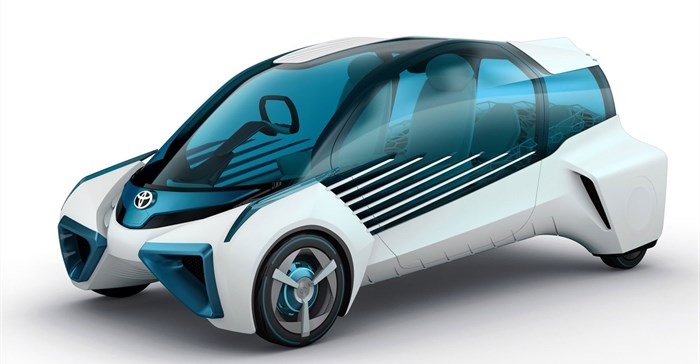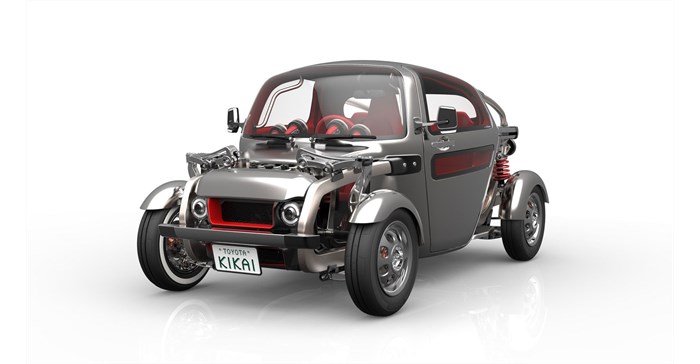Pitched as an entry-level model, the Toyota S-FR's focus is on responsiveness and character that can make a new generation fall in love with driving. The design marries simplicity and compact design to bring human and machine closer together. An exceptionally lightweight body and a front engine/rear-wheel drive drivetrain contribute to responsive performance and direct handling, generating a real sense of connection between driver and car.

The design presents a long nose and wide stance for a classic sports car profile and the rounded bodywork adds to the S-FR's welcoming appeal. The engine has a front/midship location, with optimal weight distribution and independent suspension securing excellent cornering performance. A six-speed manual transmission supports smooth acceleration, adding to the car's fun, responsive drive.
The Toyota FCV Plus concept explores how the hydrogen fuel cell used to power a car can also be deployed to as an energy source for general use. As well as having its own hydrogen fuel tank, the FCV Plus can generate electricity from hydrogen stored outside the vehicle, so the car can be used to produce power in different locations - at home, at work, or further afield.

Compressed hydrogen has a higher energy density than electricity, can be produced from a wide range of raw materials and is easy to store - all qualities that make it a promising future source of energy.
Clean hydrogen generation from different primary energy sources will make local, self-sufficient power generation possible, with fuel cell vehicles taking on a new role as power sources within their communities. Toyota's aim is to give the automobile a new sense of purpose by developing fuel cell vehicles from eco-cars into energy-cars.
The fuel cell stack in the FCV Plus is mounted between the front wheels, with the hydrogen tank located behind the rear seat. Together with independent in-wheel motors in all four wheels, this allows for a spacious cabin within a compact vehicle body.
The Toyota KIKAI makes the car's mechanical parts something to be seen and admired, rather than concealing them from view. The vehicle's inner workings have become part of the exterior in a design concept that breaks with convention.

This approach extends to the details such as the fuel tank, exhaust, analogue meters and switchgear. There is even a small window by the driver's feet, giving a view of the tyres, suspension and road surface. The movement of the front suspension's upper control arm can also be seen through the windscreen.
The driver's seat is positioned centrally, putting the driver at the heart of the action. A triangular arrangement of the three passenger seats and an expansive side window that extends up to the roofline help create a congenial cabin environment.
Kirobo the robot astronaut, won fans around the world during its International Space Station mission earlier this year. Now Toyota has created Kirobo Mini, a robot with the same 'heart' that it hopes can become a friendly companion, communicating with people through expressions and gestures. It stands 100mm tall, weighs about 200g and speaks Japanese.
Kirobo has been developed through Toyota Heart, a joint project with Denso, Robo Garage and the University of Tokyo's advanced science and technology research centre, to explore meaningful communications between humans and robots.